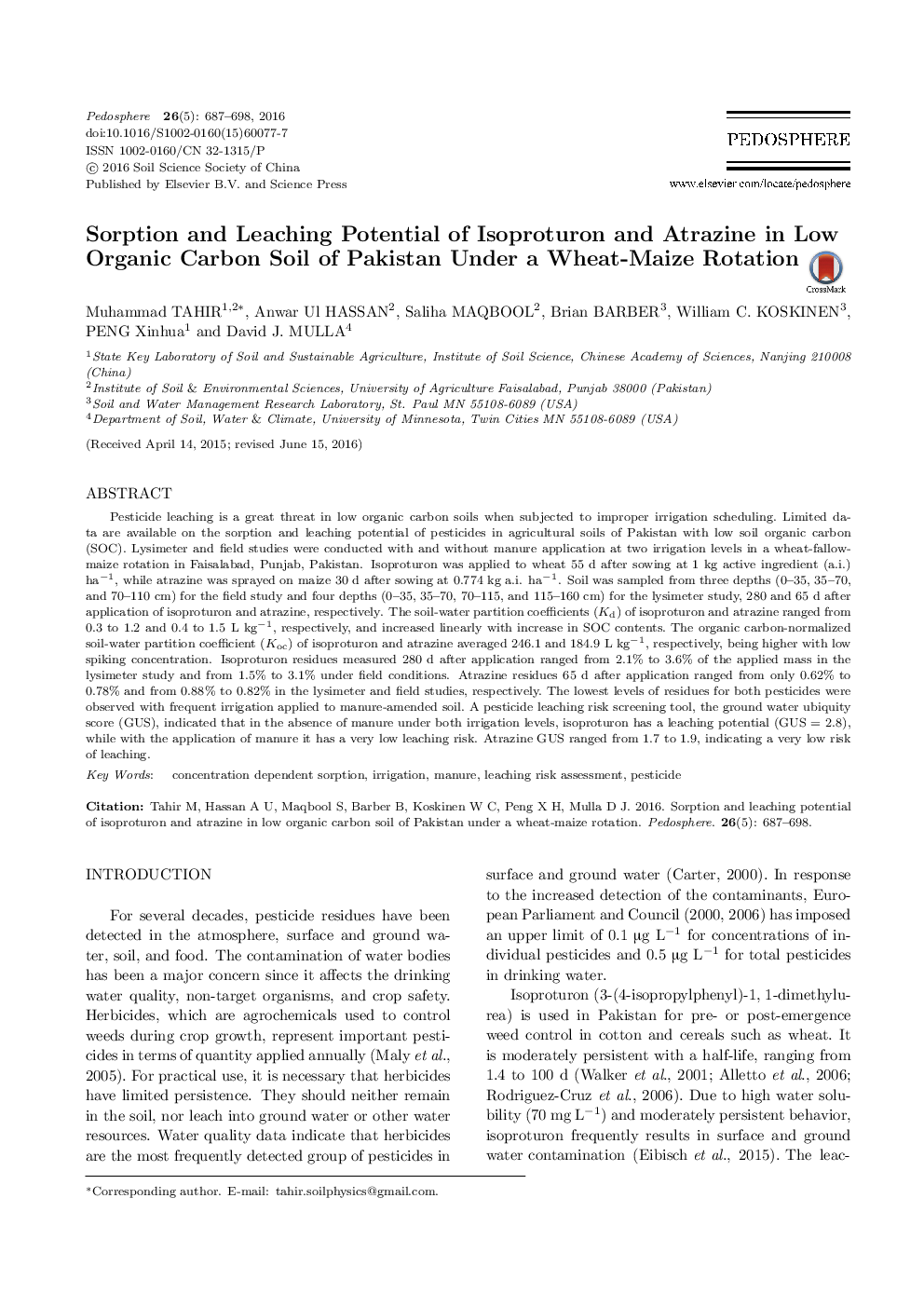| Article ID | Journal | Published Year | Pages | File Type |
|---|---|---|---|---|
| 4581163 | Pedosphere | 2016 | 12 Pages |
Pesticide leaching is a great threat in low organic carbon soils when subjected to improper irrigation scheduling. Limited data are available on the sorption and leaching potential of pesticides in agricultural soils of Pakistan with low soil organic carbon (SOC). Lysimeter and field studies were conducted with and without manure application at two irrigation levels in a wheat-fallow-maize rotation in Faisalabad, Punjab, Pakistan. Isoproturon was applied to wheat 55 d after sowing at 1 kg active ingredient (a.i.) ha−1, while atrazine was sprayed on maize 30 d after sowing at 0.774 kg a.i. ha−1. Soil was sampled from three depths (0–35, 35–70, and 70–110 cm) for the field study and four depths (0–35, 35–70, 70–115, and 115–160 cm) for the lysimeter study, 280 and 65 d after application of isoproturon and atrazine, respectively. The soil-water partition coefficients (Kd) of isoproturon and atrazine ranged from 0.3 to 1.2 and 0.4 to 1.5 L kg−1, respectively, and increased linearly with increase in SOC contents. The organic carbon-normalized soil-water partition coefficient (Koc) of isoproturon and atrazine averaged 246.1 and 184.9 L kg−1, respectively, being higher with low spiking concentration. Isoproturon residues measured 280 d after application ranged from 2.1% to 3.6% of the applied mass in the lysimeter study and from 1.5% to 3.1% under field conditions. Atrazine residues 65 d after application ranged from only 0.62% to 0.78% and from 0.88% to 0.82% in the lysimeter and field studies, respectively. The lowest levels of residues for both pesticides were observed with frequent irrigation applied to manure-amended soil. A pesticide leaching risk screening tool, the ground water ubiquity score (GUS), indicated that in the absence of manure under both irrigation levels, isoproturon has a leaching potential (GUS = 2.8), while with the application of manure it has a very low leaching risk. Atrazine GUS ranged from 1.7 to 1.9, indicating a very low risk of leaching.
